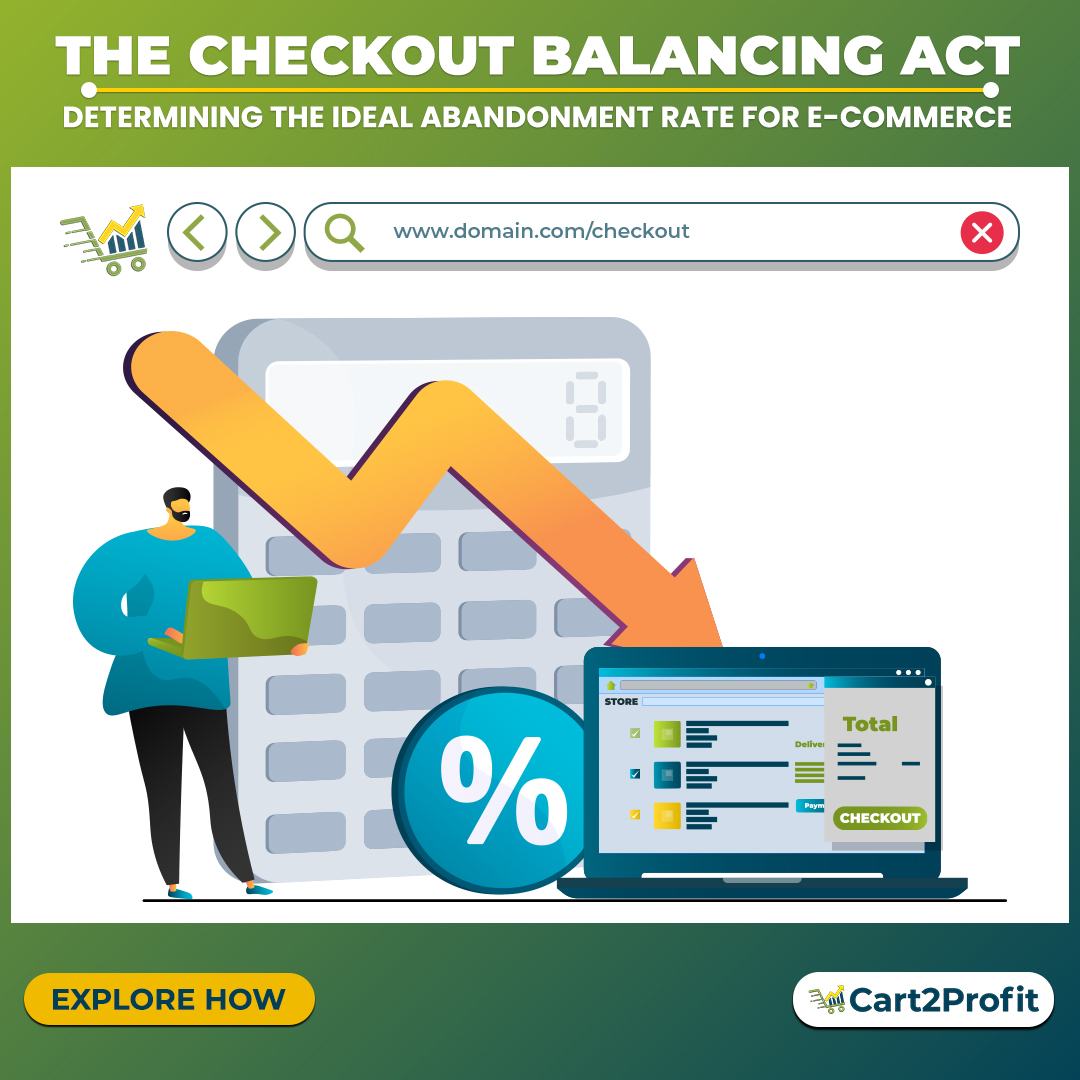
Regulating a good checkout abandonment rate can be a challenging task for e-commerce businesses. The ideal abandonment rate rests on various factors, including industry, target audience, and specific business objectives.
Table of Content
Checkout abandonment rate is the percentage of customers who initiate the checkout process but do not finish their purchase. It is measured by dividing the number of completed transactions by the number of initiated checkouts, subtracting the result from 1, and multiplying it by 100 to get the percentage.
Checkout abandonment rates can differ significantly across industries and business models. According to various studies and industry reports, the standard checkout abandonment rate ranges between 60% and 80%. However, it is essential to note that these figures are general averages and may not be pertinent to every business.
Several factors impact abandonment rates, including product type, price point, customer demographics, and the complications of the checkout process. Higher-priced items or products requiring substantial customization might have higher abandonment rates compared to lower-priced or readily available items. Moreover, businesses targeting specific bay markets or luxury segments may experience different abandonment rates in contrast to mass-market retailers.
While there is no universally defined threshold for a good checkout abandonment rate, businesses can consider the following factors when estimating their own rates:
Rather than only focusing on achieving a specific rate, businesses should hierarchize constant improvement and optimization of the checkout process. Regularly keep track of abandonment rates, implement A/B testing, gather customer feedback, and make data-driven adjustments to decrease abandonment and improve the overall conversion rate.

 CRMJuly 12, 2024Advantages of Call Center CRM Software
CRMJuly 12, 2024Advantages of Call Center CRM Software Cart Abandonment SolutionAugust 22, 2023D2C Cart Abandonment Solutions for Fitness and Sports Equipment
Cart Abandonment SolutionAugust 22, 2023D2C Cart Abandonment Solutions for Fitness and Sports Equipment Cart Abandonment SolutionAugust 21, 2023D2C Cart Abandonment Solutions for Electronics and Gadgets
Cart Abandonment SolutionAugust 21, 2023D2C Cart Abandonment Solutions for Electronics and Gadgets Cart Abandonment SolutionAugust 21, 2023D2C Cart Abandonment Solutions for Cosmetic Brands
Cart Abandonment SolutionAugust 21, 2023D2C Cart Abandonment Solutions for Cosmetic BrandsAuthor Profile Varuna Raghav As a CX and marketing specialist, Varuna Raghav has more than 15+ years of experience to […]
Read more
is the apt framework developed for deploying the right mix of People, Process & Technology in a business with a clear eye on increasing lead conversion, reducing customer acquisition & management cost, and winning customers for life.